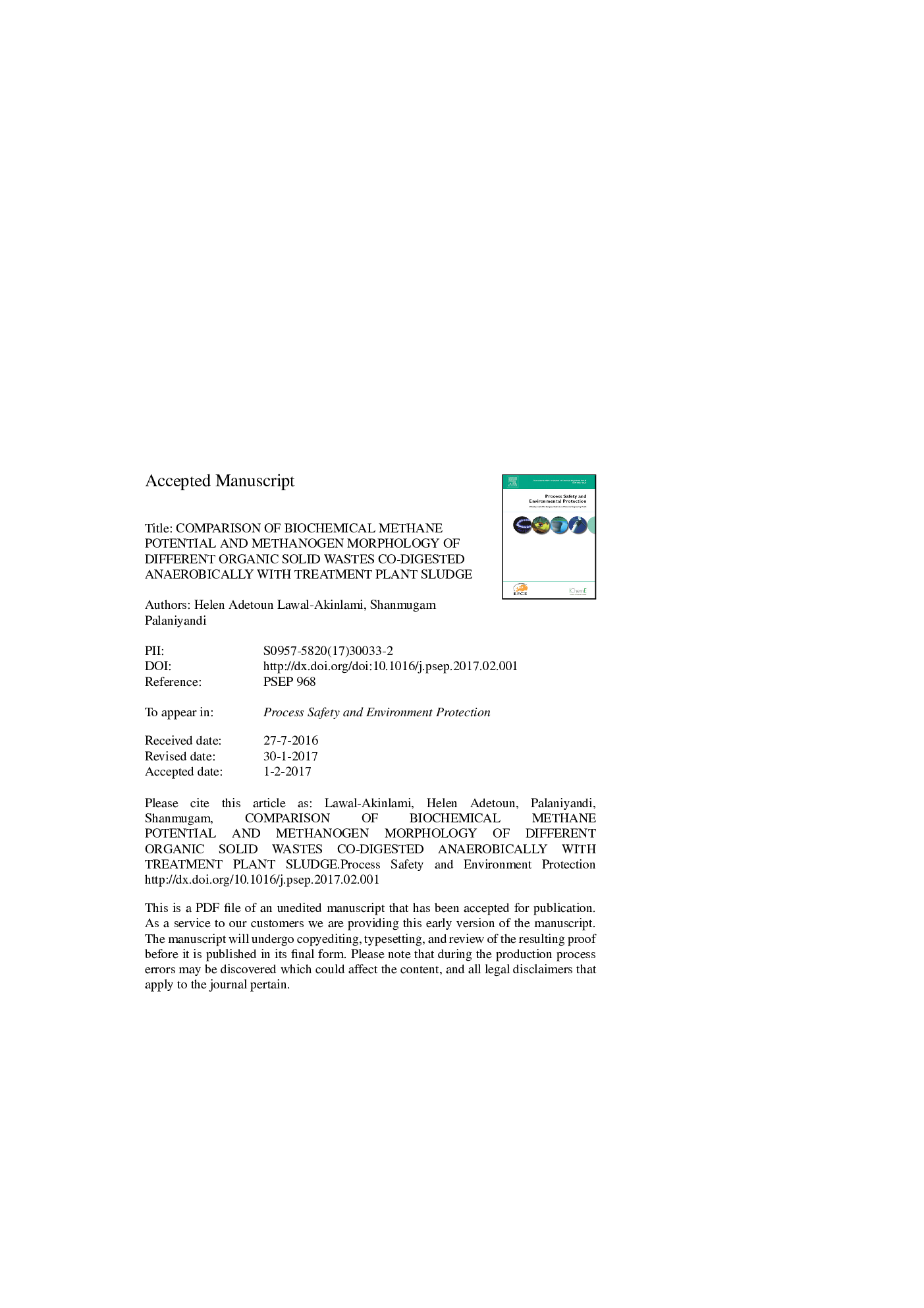| Article ID | Journal | Published Year | Pages | File Type |
|---|---|---|---|---|
| 4980984 | Process Safety and Environmental Protection | 2017 | 37 Pages |
Abstract
This paper describes biomethanation of tannery limed fleshing (TLF), fruits and vegetables (FVW), and sugarcane juice residue (SJR) with pre-fermented tannery-based common effluent treatment plant sludge (CETP), as an inoculum. The BMP, microbial morphology and other bioprocess efficiency parameters were evaluated using a laboratory scale batch reactor, with a substrate/inoculum ratio of 3:1 under a mesophilic anaerobic (35 ± 2 °C) condition and mixed at 100 rpm in orbit shaker. Maximum cumulative biogas yield was observed in FVW (2468.50 ± 0.44 Nm mL/d) followed by TLF and SJR comparatively to the inoculum. The specific methane yield observed ranged from 0.169 ± 0.05 to 0.478 ± 0.00 Nm L/g VSr for the wastes, against 0.204 ± 0.01 Nm L/g VSr for control treatment. The mixture of all the three wastes (CLFS) benefitted to yield more biogas compared to the mono-digestion. The highest VSr and sCODr efficiency of 62.44 ± 0.32 and 93.46 ± 1.04% obtained in FVW compared to other wastes, coincides with the methanogenic microbial count and densities. A good correlation (R2 = 0.82) was also observed between the experimental BMP and stoichiometric methane potential of the various organic solid wastes.
Related Topics
Physical Sciences and Engineering
Chemical Engineering
Chemical Health and Safety
Authors
Helen Adetoun Lawal-Akinlami, Shanmugam Palaniyandi,
